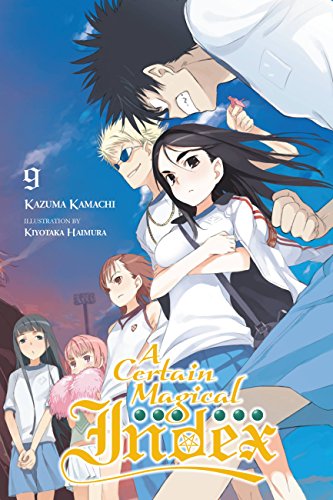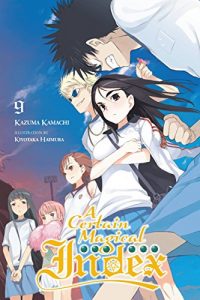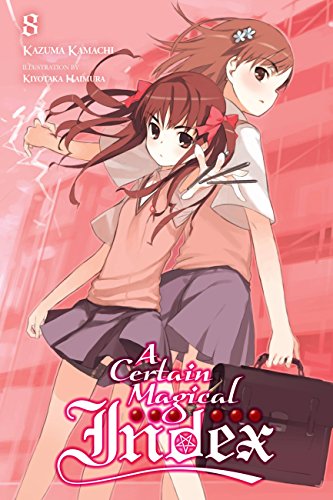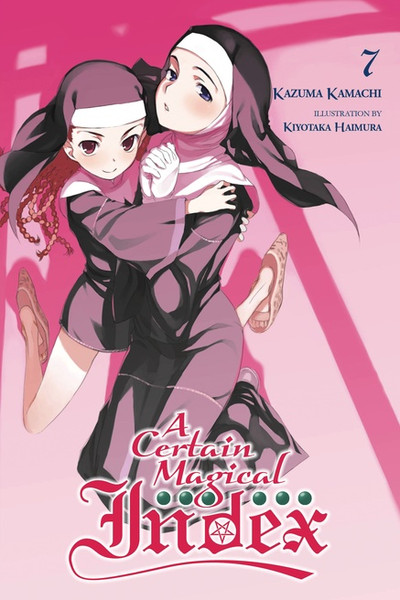By Kazumi Kamachi and Kiyotaka Haimura. Released in Japan as “To Aru Majutsu no Index” by ASCII Mediaworks. Released in North America by Yen On. Translated by Andrew Prowse.
Long ago, before this series was licensed and published, I tried to read a fan translation of these novels. I read eight volumes very easily, then bogged down about halfway through this one. A while later I tried again – and the same thing happened. The read came to a grinding halt. This time, with the official release, I am at last able to get to the end of the book, but I do note that the middle section is still a slog. I’ve complained before that Kamachi loves his worldbuilding more than his actual story and characters, and nowhere is this more apparent than in Kamijou, Tsuchimikado and Stiyl discussing the proper use of magic to try to catch Oriana Thomson. It’s fascinating if you’re a D&D-type gamer who loves learning how to use fictional concepts. For a casual reader it’s absolutely deadly. Be warned.
Introduced in this volume: Misaka Misuzu, Fukiyose Seiri, Oriana Thomson, Lidvia Lorenzetti. We also see Touma’s mother Shiina for the first time with her actual appearance, as opposed to Index’s. Continuity-wise, this takes place, obviously, at the same time as Railgun’s Athletic Festival arc in the manga, though most of the events that happen there take place after all this. It’s about 4 days after the events of Book 8, which is why Kuroko is in a wheelchair, and the Railgun manga may now finally make sense to those who wondered that. The events of the Index movie Miracle of Endymion have also just taken place shortly before this.
This is, believe it or not, the first Index arc to take up more than one book. Given the predominance of multi-volume arcs in light novels these days, you’d think it would have happened before this, but no. It’s also the fist book where Kamachi had to admit in the afterword that he wasn’t sure who the heroine was for this particular book. I sort of see why he said this, given that there was attention paid to several girls, but I think at least for this book, Seiri comes closest to being the heroine. It’s just… Kamijou fails to save her, a rarity in this series. Sure, she’s not dead, but I expect her out of commission for the next book. Personality-wise, many might think she’s another tsundere like Mikoto, but that’s not quite accurate – Kamachi may use cliches, but he’s good at shading them. She’s the ‘class president’ sort, which means she’s uptight and rule oriented, and (the class assures us) she isn’t in love with Kamijou, though that’s somewhat suspect. She also has an eccentric love of online shopping products. She’ll never be relevant again, but she was fun to meet.
Oriana is the villain of this book, and possibly the next. She’s yet another magic world user invading Academy City, supposedly to deliver a weapon that cam take out any Saint from a distance, but in reality her motivations – or those of her partner, Lidvia – are far more apocalyptic. Once again religion is used as sort of a D&D class, and that’s not going to change. I liked that she never used the same move twice, to the point that even if it’s a detriment, she CAN’T. There were also several fun and cool moments in the book, such as the class uniting to get revenge on the teacher who made Komoe-sensei cry, as well as various moments when you realize that behind his ‘normal guy’ facade, Kamijou is actually really, really clever about figuring things out.
Sadly, this is to be continued in the next book, so there isn’t much closure here. Instead, I am left with what I was the first two times I tried to read this: Tsuchimikado telling me about magic use and religious systems for what seems like 800 pages. Luckily, I’ve passed it now, and hope Book 10 is less academically dense.





